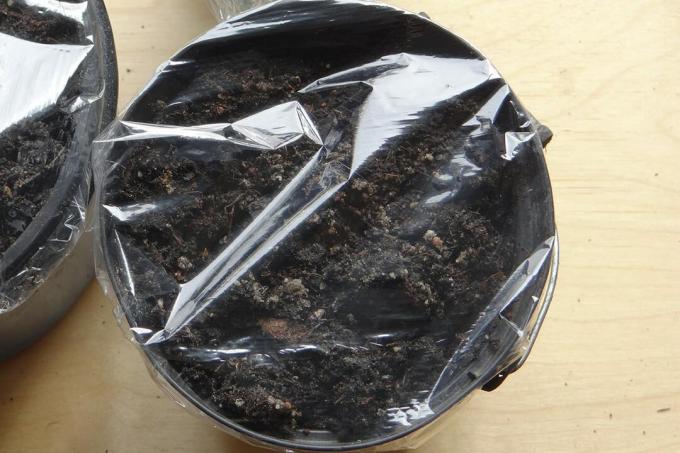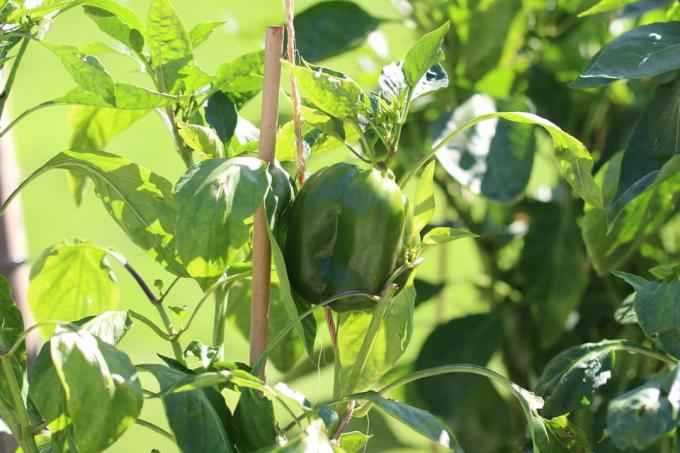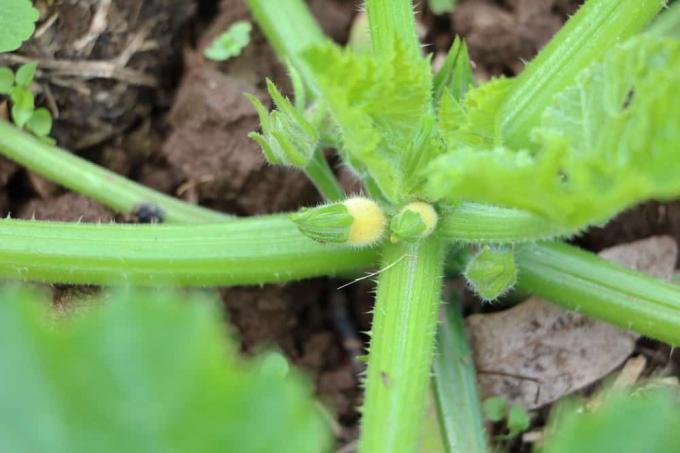

Table of contents
- What is needed?
- seed
- The optimal conditions
- Preparation
- sowing instructions
Proper sowing is crucial for the development of pepper plants. We will tell you the most important care steps so that your pepper sowing is also successful!
What is needed?
If you want to grow peppers from seed, you only need a little special equipment. Because much of it can be found in most households anyway and can be misused for sowing. It is only recommended to use special growing soil or soil for the substrate. resort to germination substrate. This offers the ideal conditions for growing pepper plants, because it is poorer in nutrients than ordinary vegetable soil and thus stimulates the roots to grow. In addition to the substrate, the following utensils for sowing peppers should also be available:
- Container: egg carton, coconut swell pot, peat or yoghurt pot
- Mini greenhouse or foil
- seed
- Camomile tea
seed
With regard to the seed, the hobby gardener has two methods to choose from, because he can either purchase the peppers or obtain them from existing peppers. The latter is very popular: on the one hand, there are no additional costs and, on the other hand, the effort required is very low.

The best way to get seeds from peppers is as follows:
- Slice the peppers lengthwise
- Carefully remove the inside with a knife or spoon
- Place the pepper seeds on a kitchen towel to dry
- Leave to dry in a sunny place for 3 to 5 days
- Store dried seeds in a paper bag in a frost-free place
Anyone who decides to purchase the seeds can do so from various specialist dealers, both online and on site. In order to determine whether the pepper seeds are in perfect condition, they should be checked for certain quality features:
- Firm, not sensitive to pressure
- Ocher yellow color
- 2 to 3 mm in size
The optimal conditions
Successful seed germination depends on various factors. Because both the time and the location as well as the temperature and light conditions are decisive for this. A date between the end of February and the beginning of March has proven to be the best time, as this gives the plants enough time to mature and produce fruit by the end of the season. A location that is as bright and warm as possible offers the best conditions.
- Heated greenhouse
- Window sill on a south window
- conservatory
- temperature: approx. 25 degrees Celsius
- If it is too cold, no germination will take place
Tip:
Many hobby gardeners swear by sowing according to the lunar calendar and sow peppers at the beginning of March in the waxing phase of the moon.
Preparation

If the necessary equipment is available and the location and time have been selected, hobby gardeners can start sowing the pepper seeds. But instead of planting the seeds directly in the soil, it's worth soaking them for several hours. Because this process is supposed to kill fungal spores and the seedlings grow healthier and stronger.
- Provide chamomile tea or water
- Soak the pepper seeds in it for about 24 hours
- Put in a dark place out of direct sunlight
sowing instructions
After the pepper seeds have been prepared for sowing, they can be sown in the next step. For this purpose, a seed tray (or an alternative, such as an egg carton) is first filled with seed soil. The seeds can then be used as follows:
- Distribute the seeds evenly in the container
- Press about 1 cm deep into the soil
- Put a thin layer of soil on top
- Press the substrate gently
- Moisten thoroughly
- Close the jar or cover with foil
When the sowing is done, the container can be placed in a warm and bright place. A sunny windowsill offers the ideal conditions for this. However, the seeds should never be left to their own devices, because from now on they have to be cared for accordingly.

However, the maintenance measures are manageable and are as follows:
- Remove foil several times a day
- This prevents mold formation
- Keep soil moist but not too wet
- Substrate should remain crumbly
A notice:
The germination period depends on the site conditions and can take up to three weeks.
 Home editorial office
Home editorial office
Find out more about paprika, chili & Co

12 good neighbors of peppers | mixed culture
The Germans love peppers. On average, more than four kilograms are consumed per person per year. In the garden, the vitamin-rich vegetable thrives in sunny spots. If you choose the right plant neighbors, you can look forward to a high yield.

Sowing peppers: sowing according to the lunar calendar 2023
Red, yellow or green, pointed or round, mild or hot, paprika is one of the most popular types of vegetables. Would you like to grow the healthy vegetables in your own garden? If you pay attention to the needs of the plant and the lunar calendar, you will benefit from a rich harvest!

Cut/pinch out the pepper plant | 5 tips for pruning
Sweet, hot, pointed or plump, which hobby gardener does not like them, the crispy fresh or fiery peppers. Be it the mildly fruity sweet peppers or the spiced peppers with different degrees of spiciness. Cultivation and care are the same. There is only a small difference in the cut.

Chili cultivation: Instructions for sowing and pricking out
If you want to harvest interesting chili instead of boring peppers, you have to grow the young plants yourself. Seeds are available cheaply in stores, and specialized online shops in particular are well stocked. After that, it's just a matter of taking the right step at the right time.

Prick the peppers: Instructions | Soil and pot size basics
To germinate, many pepper seeds may be close together. But as soon as the seedlings rise from the ground and form the first green leaves, they should be separated from each other. Transplanting them into their own pots gives them more space and therefore better growing conditions.

Climbing zucchini: plants, care and ideas for zucchini trellises
Climbing courgettes are practical both on the balcony and in the garden, as they only take up little space in width and can therefore be grown in a space-saving manner. Here we reveal what is important when it comes to care.



